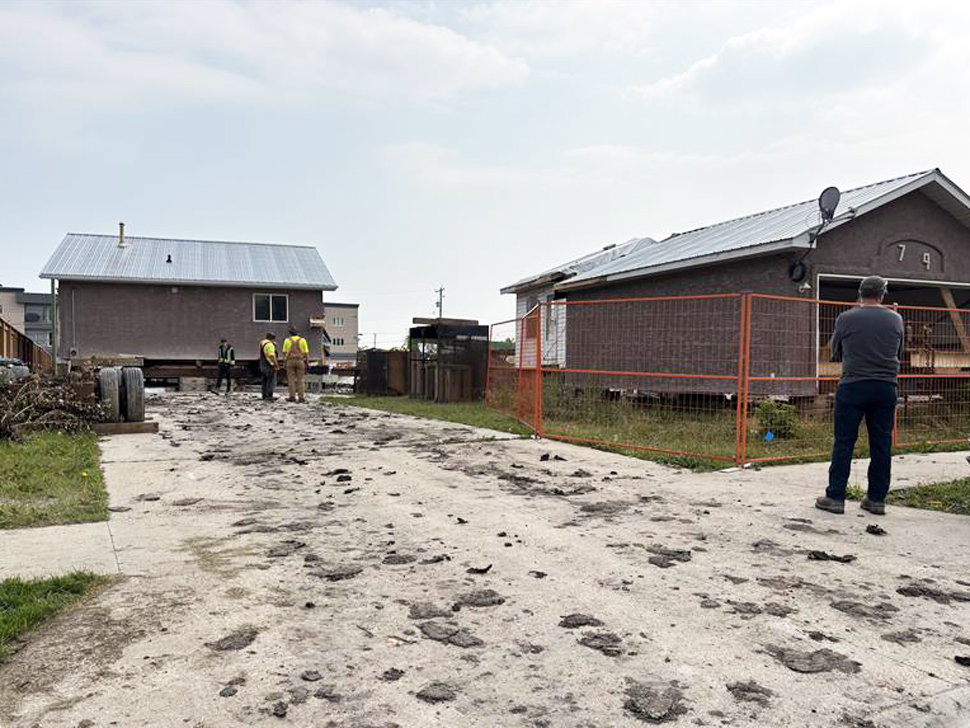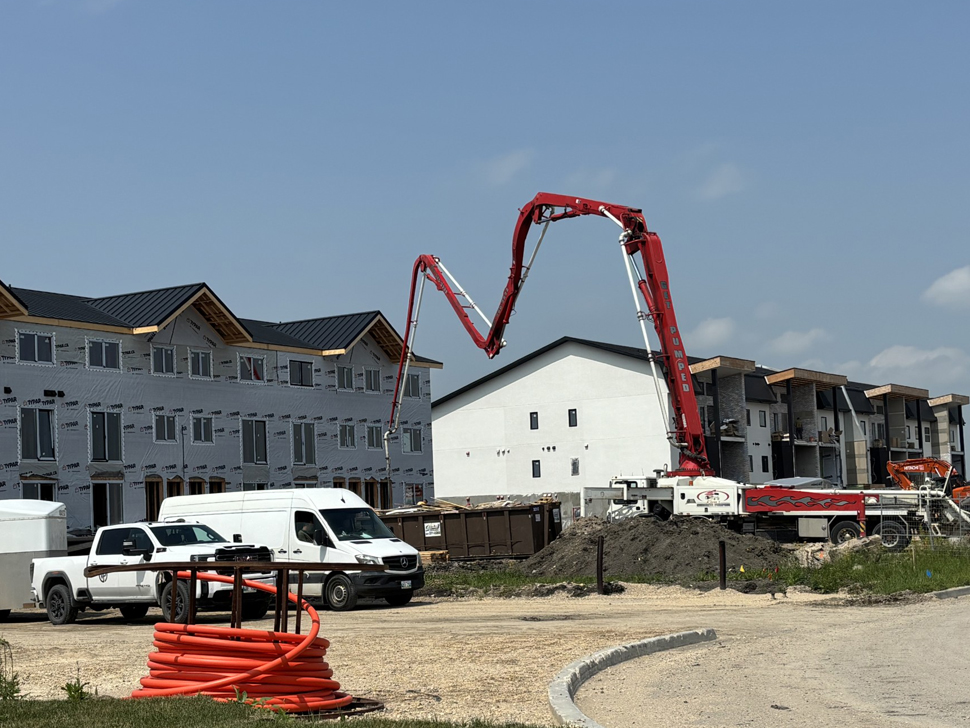The City of Steinbach is reporting a surge in residential construction this year, issuing building permits worth nearly $57 million during the first six months of 2025 — a 57 per cent increase over the same period last year.
Mayor Earl Funk announced during a recent council meeting that permit values for June alone totalled $9.5 million, including nearly $9 million in residential and $650,000 in industrial, school, church, and commercial construction.
“We’ve added 35 dwelling units to our inventory. That gives us a grand total of 225 dwelling units for the year so far,” Funk said. “Our permitting staff must be going crazy right now just because of all the inspections they have to do when these are being built.”
Residential construction nearly doubles year over year
The city’s year-to-date total of 225 new dwelling units includes 36 single and two-family homes and 189 multi-family units. That’s a 132 per cent increase from the 97 dwelling units permitted during the same period in 2024.
Councillor Damian Penner said developers are responding to Steinbach’s changing needs. “We have a good mix — approximately one-third of the units added this month were single and two-family units and two-thirds are multi-family,” Penner noted. “The developers know what the market needs and are providing the variety that is desired.”
In dollar terms, residential permits issued in the first half of 2025 amounted to $43.9 million, more than double the $20.5 million recorded during the same period last year.
Siemens says growth reflects confidence and momentum
Councillor Jac Siemens said this year’s surge in residential growth follows a different pattern than previous years, when large-scale institutional and commercial projects drove permit totals.
“This year there is strong residential growth — $44 million in residential properties — but only $13 million in commercial,” Siemens said. “Each year kind of flip flops. For a year or two it's residential and then commercial takes off. This is one of those high-residential years again.”
Despite a drop in single and two-family homes compared to 2024, Siemens said the overall numbers point to strong population growth. “We’re talking 225 dwelling units — if you put two people per unit, that’s 500 people. But if it’s families of four, that’s 1,000 people moving into Steinbach,” he explained.
Commercial activity steady, but lower than last year
While residential construction saw significant gains, commercial and institutional growth cooled slightly. The city recorded 140,988 square feet of commercial, industrial, school, and church development through June — up from 29,514 square feet last year. However, the total dollar value for these permits dropped from $15.8 million in 2024 to just under $13 million in 2025.
Siemens said this kind of fluctuation is normal. “Those numbers are what they are, but it’s fantastic to see this,” he said. “That means there’s work happening, people are busy, and it speaks well for Steinbach overall.”

He also acknowledged the ongoing road construction in Steinbach, noting that while it brings temporary inconvenience, it reflects the city's steady growth. Siemens pointed to the upgrades along Highway 12 as an example of infrastructure catching up with development.
“Everybody sees how nice that highway is when it will be complete,” he said, adding that such projects wouldn’t happen without the continued population and housing growth within the city.
Looking to the future
Siemens, who has served on city council for nearly 20 years, said Steinbach’s ongoing momentum is reflected in infrastructure upgrades, population growth, and diverse development.
“As I go to grocery stores today, I don’t know people,” he said. “Twenty years ago, I knew everyone. That has also changed along with growth in the community.”
He added that the city is already preparing for a $130-million lagoon project, which he described as essential for future growth. Siemens also shared his personal hopes for future amenities, including a performing arts centre and an indoor sports facility.
“Growth is multifaceted,” Siemens said. “We need to take a look at all of it at the same time and each year adjust our priorities accordingly.”
